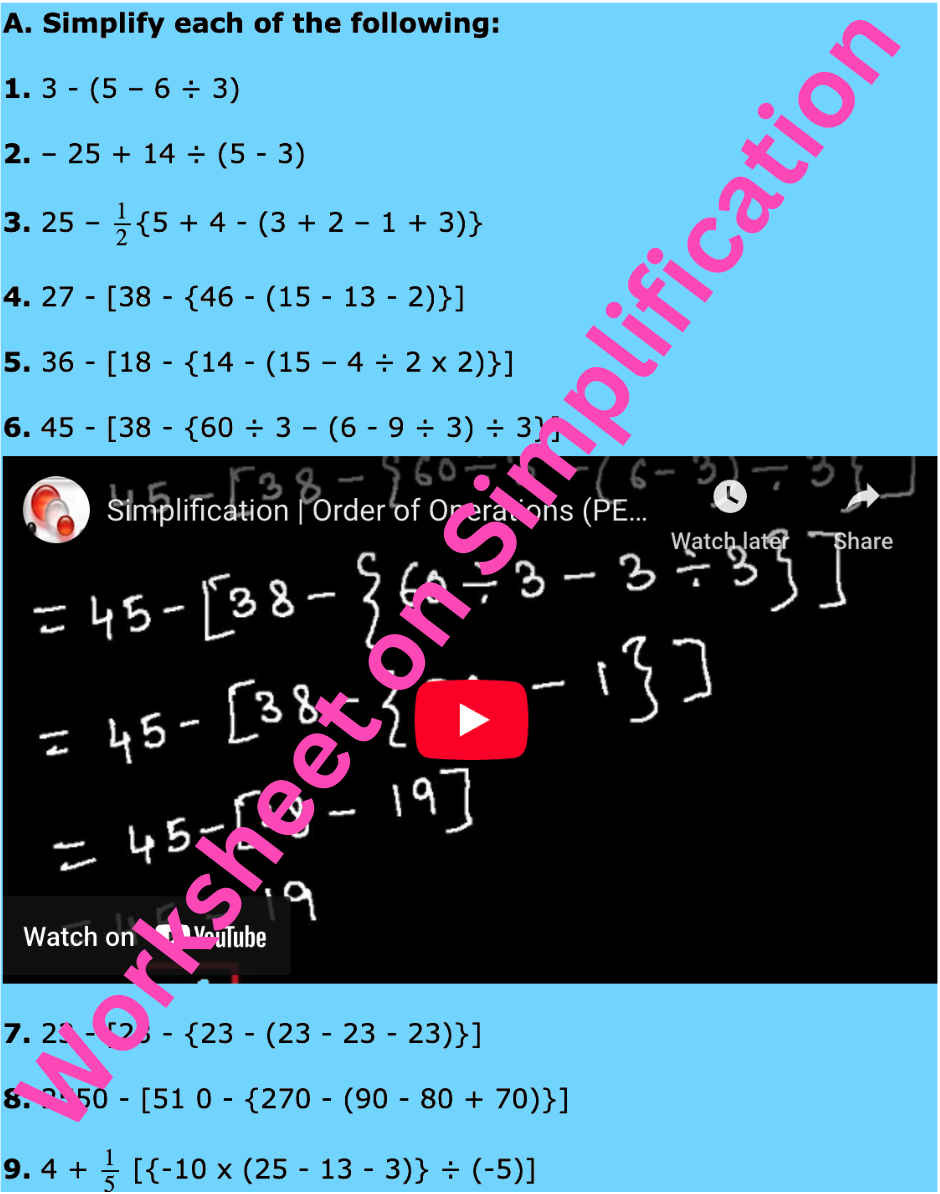Problems on Law of Inequality
Here we will solve various types of problems on law of inequality.
1. Mark the statement true or false. Justify your answer.
(i) If m + 6 > 15 then m - 6 > 3
(ii) If 4k > - 24 then - k > 6.
Solution:
(i) m + 6 > 15
⟹ m + 6 - 12 > 15 - 12, [Subtracting 12 from both sides]
⟹ m – 6 > 3
Therefore the sentence is true.
(ii) 4k > - 24
⟹ 4k−4 < −24−4, [Dividing both sides by -4]
⟹ -k < 6
Therefore the sentence is false.
2. If 3z + 4 < 16 and z ∈ N then find z.
Solution:
3z + 4 < 16
⟹ 3z < 16 - 4, [Using the Rule of transferring a positive term]
⟹ 3z < 12
⟹ 3z3 < 123, [using the Rule of division by a positive number]
⟹ z < 4
According to the given question z is natural number.
Therefore, z = 1, 2, and 3.
3. If (m – 1)(6 – m) > 0 and m ∈ N then find m.
Solution:
We know that xy > 0 then x > 0, y > 0 or x < 0, y < 0
Therefore, m – 1 > 0 and 6 – m > 0 ....................... (1)
or, m – 1 < 0 and 6 – m < 0....................... (2)
From (1) we get, m – 1 > 0 ⟹ m > 1,
and 6 – m > 0 ⟹ 6 > m
Therefore form (1), m > 1 as well as m < 6
From (2) we get, m – 1 <0 ⟹ m < 1
and 6 – m < 0 ⟹ 6 < m
Therefore form (2), m < 1 as well as m > 6
This is not possible because is m is less than 1, it cannot be greater than 6.
Thus (1) is possible and it gives 1 < m < 6, i.e., m lies between 1 and 6.
But according to the given question m is natural number. So, m = 2, 3 , 4 and 5.
From Problems on Law of Inequality to HOME
Didn't find what you were looking for? Or want to know more information about Math Only Math. Use this Google Search to find what you need.
Recent Articles
-
Counting Numbers from 1 to 50 | Match the Number | Missing Numbers
Apr 04, 25 03:46 PM
In counting numbers from 1 to 50, recognize the numbers, count and then join the numbers in the correct number order. Here we mainly need eye-hand coordination to draw the picture and maintain the num -
Counting Eleven to Twenty with Numbers and Words |Numbers from 11 - 20
Apr 04, 25 03:21 PM
Counting eleven to twenty with numbers and words are explained below. One ten and one more is eleven. Eleven comes after ten. One ten and two more is twelve. Twelve comes after eleven. -
5th Grade BODMAS Rule Worksheet | PEMDAS | Order of operations|Answers
Apr 03, 25 03:11 PM
In 5th Grade BODMAS Rule Worksheet you will get different types of problems on mathematical expressions involving different operations, mathematical expression with 'brackets' and 'of' and simplifying… -
Worksheet on Simplification | Simplify Expressions | BODMAS Questions
Apr 03, 25 02:58 PM
In worksheet on simplification, the questions are based in order to simplify expressions involving more than one bracket by using the steps of removal of brackets. This exercise sheet -
Divisible by 2 Video |Test of Divisibility by 2 Trick| Rules| Examples
Apr 03, 25 10:25 AM
A number is divisible by 2 if the digit at unit place is either 0 or multiple of 2. So a number is divisible by 2 if digit at its units place is 0, 2, 4, 6 or 8.





New! Comments
Have your say about what you just read! Leave me a comment in the box below. Ask a Question or Answer a Question.